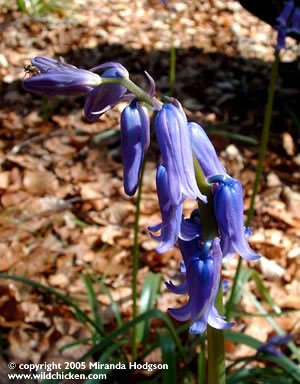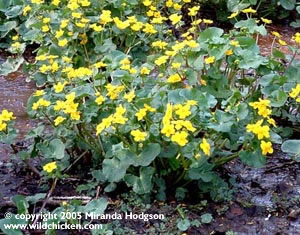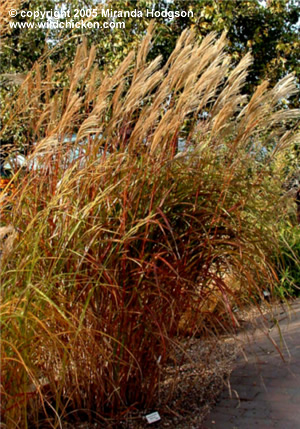Understanding botanical names
Why can't we just use common names?
Common names can be easy to remember and a lot of them sound nice; some of them can roll off the tongue most pleasantly, while others even have a bit of history attached to them. Lady’s Mantle, for example, or Granny’s Bonnet. Did grannies really wear hats shaped like that?
If you and the person you’re talking to both know which plant you’re talking about, all well and good, but as one name can apply to many plants, common names can be misleading and confusing. Because so many our garden plants come from all over the world, they seldom have the same common in the countries they come from, which adds to the confusion. Some plants are not grown in gardens very often, or are new, and so have no common name.
We often think of botanical names as being Latin – whilst the names may be ‘Latinised’ to adhere to Latin rules of grammar, many languages are used and the name may take be made up of the plant finder, origin, habitat, colour or habit.
A good example of the confusion that arises with common names can be seen by looking at one plant, the common English bluebell.
Everyone knows what a bluebell is, don’t they? In the UK, ‘bluebell’ means Hyacinthoides non-scripta; in the US it means both Campanula americana and Campanula parryi.
Depending on where else you are, it can also mean Campanula rotundifolia or Mertensia virginica. If you add an ‘s’ to the word ‘bell’ it can mean simply Mertensia.
In Scotland, what the English call harebells are locally known as bluebells.
Confused yet?

Hyacinthoides non-scripta
Another example is sage – if someone says ‘sage’ to you, there are any number of plants that might pop in to your mind, apart from the kitchen herb that most of us are familiar with, but there are 900 varieties of sage in existence - 900! They come in all shapes and sizes, with many different flower colours, leaf scents and shapes and environmental tolerances. I don’t know much about sages but on visiting a friend’s garden, I was surprised at how many she had. As we walked round she was telling me about her plants and the phrase that came out most often was ‘That’s another sage’. Some of them looked so different to the cooking herb sage that you wouldn’t guess it was from the same family.
Botanical names aren’t long/strange just for fun, the name can tell us a lot about the plant, where it grows naturally and what it might look like. Sage is a good one to start with.
Garden sage is also known as Salvia officinalis. Salvia comes from the Latin ‘salvus’ for ‘safe’ or ‘unharmed’ referring to its medicinal properties. ‘Officinalis’ means ‘from the shop’ and tells us that this plant was previously used by herbalists. Going on to other varieties, there is Salvia farinacea – ‘farinacea’ means ‘mealy’ and comes from the Latin word for ‘flour’. From that we can guess that the plant has a floury look to its leaf or stem.
Many plants give us clues to their habitat in their names. Nicotiana sylvestris, where ‘sylvestris’ means ‘of woodland’, tells us that this plant will thrive in dappled sunlight.
‘Palustris’ (Caltha palustris) means ‘of marshes’ meaning that any plant with this in its name likes moist ground and, growing naturally, is likely to be found by a stream or in a boggy area.
‘Littoralis’ (‘by the sea’) as part of a name (like Griselinia littoralis) shows that the plant is adapted to a coastal environment and can withstand salty air.

Caltha palustris likes to be in moist ground
Then there are part of a plant’s name that say a bit about what it looks like. The addition ‘glauca’ tells us that the plant has leaves with a blue tinge, while ‘lutea’ shows that it has either yellow leaves or flowers. ‘Icterina’ also means marked with yellow (literally ‘jaundiced’). One of the easiest to learn is ‘alba’ which means ‘white’ and usually refers to the flowers.
Finally, some names will tell you where the plant originated or who discovered it and brought into broader cultivation.
So we have ‘sinensis’ or ‘chinensis’ for China; ‘indica’ for India; ‘novae angliae’ for New England, and so on.
For the finders we have wilsonii (Wilson), forestii (Forest) and tradescantii (Tradescant), to name but three; there are many more examples.

Miscanthus sinensis 'Silberfeder'
Learning a bit about how plant names are made up can help you to figure out what it might look like if you haven’t seen it before. The system that we use for naming plants was invented by the Swedish botanist, Carl Linnaeus, in 1753, in order to make it easier for people who speak different languages to understand one another. Although Latin is no longer used, it’s still a universal language that can be understood, or at least looked up in a book.
I've compiled a list of botanical terms and definitions that should help to explain some of the names, or at least parts of them.
The parts of the name that we use most often are the genus, species and cultivar. For an explanation of how plant names work, Alan Titchmarsh suggests thinking of them like family names – your family name followed by your given name, like this: Hodgson Miranda. ‘Hodgson’ is the genus and ‘Miranda’ is the species.
In plants, the species can be described as “a group of individuals with the greatest mutual resemblance, which are able to interbreed amongst themselves.” [1]. The genus is a grouping of similar species with similar characteristics. There are also families, sub-species, varieties, forms and hybrids, but the aim of this article is not to go that deep and is simply an appreciation of botanical names.
On first glance, botanical names may be unfamiliar, difficult to learn and tricky to pronounce, but they really are useful if you’re to get the right plant and not end up with an disappointing surprise ('Sorry, thought you realised that the Christmas rose wasn't really a rose').
As for saying it right, for myself, I'm not that bothered about pronunciation and feel that there is a lot of snobbery about saying the name as a Latin master might have taught it. You can't help feeling that there is a tinge of classism involved, of the 'Oh, I see you didn't go to one of the better schools, as I did' type. At the end of the day, if you know how to spell it and what it means, that’s the main thing.
Those wanting a more in depth guide to the naming of plants will find that written by the Horticultural Taxonomy Group (Hortax) useful. You can download it here: Plant Names - a guide for Horticulturists, Nurserymen, Gardeners and Students (562kb).
1. The Principles of Horticulture. Adams, Bamford & Early. Butterworth-Heinman 1984.